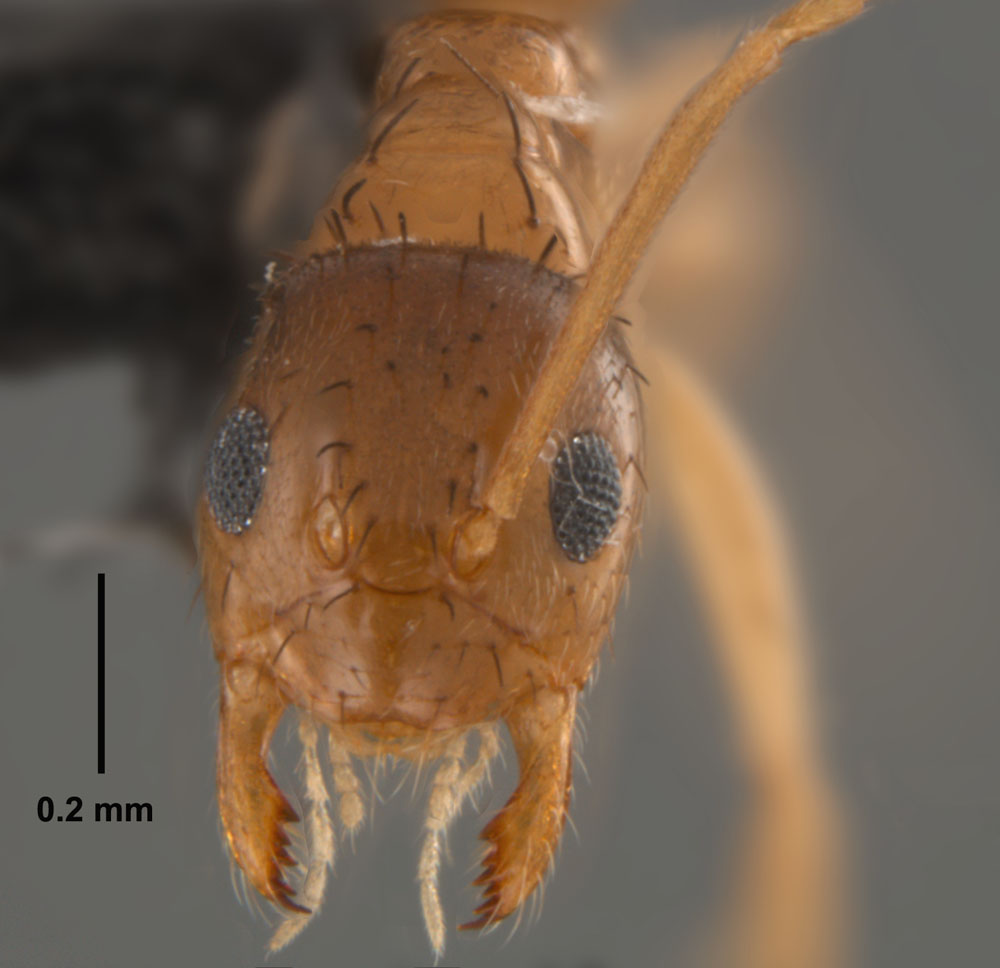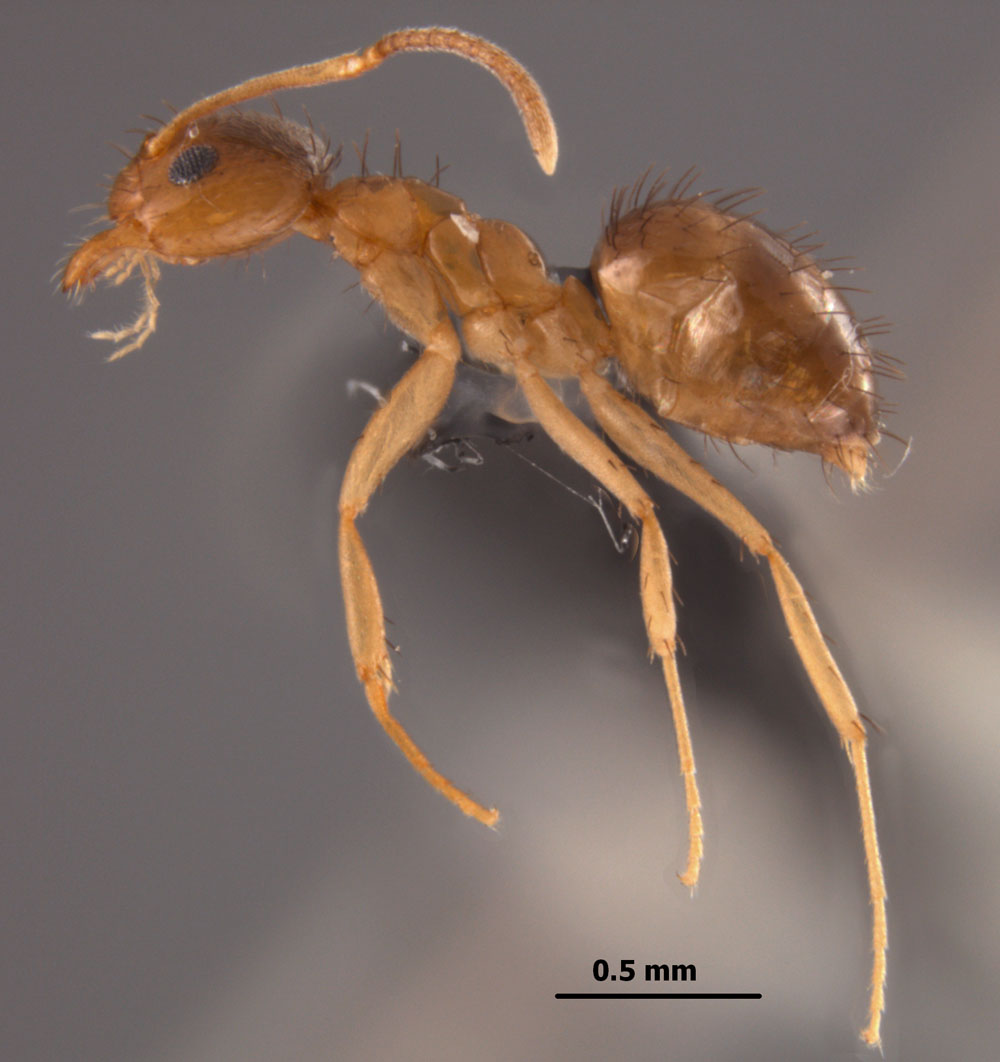Subfamily FORMICINAE Tribe LASIINI Nylanderia trageri Kallal and LaPolla, 2012 |
|
Nylanderia trageri, profile view of a worker from MS (click image to enlarge). |
|
Nylanderia trageri , full face view of a worker (click image to enlarge). |
Nylanderia trageri , side view of a worker (click image to enlarge). |
Introduction Trager (1984) revised the genus, then called Paratrechina, for the continental United States. LaPolla et al. (2010) elevated the subgenus Nylanderia to the generic level, which in effect, meant that all Nearctic Paratrechina species except for P. longicornis were now placed in Nylanderia. In 2012, Kallal and Lapolla (2012) revived the genus and provided an updated key for the Nearctic region. However, there are still some undescribed species in this group that which may be parasitic on other Nylanderia species. These species apparently do not have a worker caste, and the males are unusual in that they have characteristics of both males and workers. Nylanderia trageri was recently decribed as a unique species by Kallal and LaPolla (2012). This yellow woodland species lacks macrochaetae on the scapes and was previously considered a color morph of N. parvula. Identification (from Kallal and LaPolla 2012) Female: 3.54-4.25 mm (TL). Brown to yellowish brown with scapes, mandibles, and legs lighter. Entire body with dense pubescence that does not obscure the shiny cuticle. Male: 2.02-2.07 mm (TL). Uniformly brown in color; scapes, mandibles, and legs yellowish-brown; and meso- and metacoxae occasionally lighter. Pubescence sparse to moderate on head, dense on mesonotum, and mostly laster on gaster. Genitalia with triangular parameres, digiti almost nearly long as adeagal valves, cuspides slightly less than half as long as digiti. This species is most similar to N. parvula from which it differs by the workers being yellow instead of dark brown as in N. parvula. Biology and Economic Importance Distribution Kallal, R. J. and J. S. LaPolla. 2012. Monograph of Nylanderia (Hymenoptera: Formicidae) of the World, Part II: Nylanderia in the Nearctic. Zootaxa 3508: 1-64. Lapolla, J. S., S. G. Brady, and S. O. Shattuck. 2010. Phylogeny and taxonomy of the Prenolepis genus-group of ants (Hymenoptera: Formicidae). Systematic Entomology 35: 118-131. Trager, J. C. 1984. A revision of the genus Paratrechina (Hymenoptera: Formicidae) of the continental United States. Sociobiology 9: 49-162.
|
|





